Take a look at a Irish 1;50,000 Ordnance Survey Map and the only paths which are obvious apparent are the recreational trails marked in dotted red which leaves great swathes of the countryside devoid of anywhere to walk but with some research this is not necessarily the case.
I have been venturing the Emerald Isle for a number of years now and there are a vast variety of walking opportunities from hill and mountain to coastal and town trails and so you are never far from anywhere to walk.
If you are inkling to do some mountain walking in Ireland there are several guide books at hand which will direct you up and down the easiest way and the website www.mountainviews.ie is an invaluable source of information and includes many hill walk logs from other users. Irish mountains can often provide quite a challenge and in many cases there are no paths and the terrain is commonly much harder than you would find say in the English Lake District. Having said this, the rewards are great, and the visibility on a fine day is second to none. For much of Ireland the best map to use is the 1;50,000 scale Ordnance Survey Maps which cover the whole country in 89 sheets. In selected popular areas, larger scale maps are available and the Irish Ordnance Survey have launched a series of 1;25,000 (Adventure Series) maps for the more popular areas such as the Macgillycuddy’s Reeks, the Wicklow Mountains, along the Shannon and a few other areas but new maps are being released at a very slow pace. Another map source is www.eastwestmapping.ie which is a bit like the Irish equivalent of Harvey’s maps in the UK and are useful in showing many additional features like field boundaries and type of terrain.
Another source of walking information is on the www.discoverireland.ie/walking website where you have the option of selecting a county and then a linear, way-marked trail or loop walk. These can be downloaded and have maps with walk directions and there are literary hundreds of them to choose from. Alternately you may want to follow an historic trail around a town and again the information can be downloaded.
The next source of walking in Ireland can be found on the www.coillteoutdoors.ie website. This is the equivalent to the Forestry Commission in the UK. Select the ‘Recreation sites and Trails’ and by selecting the desired county you wish to walk in, a whole list of locations are displayed which can be downloaded. The walks vary in lengths from short strolls to all day walks and are generally in woodland areas and are usually way-marked.
The www.irishtrails.ie is a valuable source of information and on this website there are currently forty-four long distance trails listed. Select any one, and maps can be downloaded. If following any of these trails it is good to have a second car at the far end as public transport in most of Ireland is rather thin on the ground. Personally, I have found each trail well way-marked with posts depicting a yellow symbol of a walker and arrow which points the route direction.
As for Northern Ireland, again there are many trails and the best website is www.walkni.com which gives a large variety of walks spread throughout the province. Select the type of walk you want, from short, medium or long and you can download details of the walk description and map.
Finally I give some advice to anyone walking in Ireland. There are ample trails to follow so I would recommend trying these first. On most moorland and mountain it is generally a ‘freedom to roam’ anywhere but not always. Asking at a farm to walk in an area is often worth the effort. Try to avoid farmland if possible if not on a designated trail as there are few gates. Many fields have cattle and bulls and Irish hedges are often impossible to get through in a hurry and many have watery ditches. Farm dogs can be an issue so I would advise anyone to carry a walking pole or poles but other than that enjoy yourself as there is so much on offer.
 This is a fine section of coastal path south of Dublin. No need for walking boots on this one for this seven mile scenic trail between Graystones and Bray. You can get the train to the start then walk back.
This is a fine section of coastal path south of Dublin. No need for walking boots on this one for this seven mile scenic trail between Graystones and Bray. You can get the train to the start then walk back.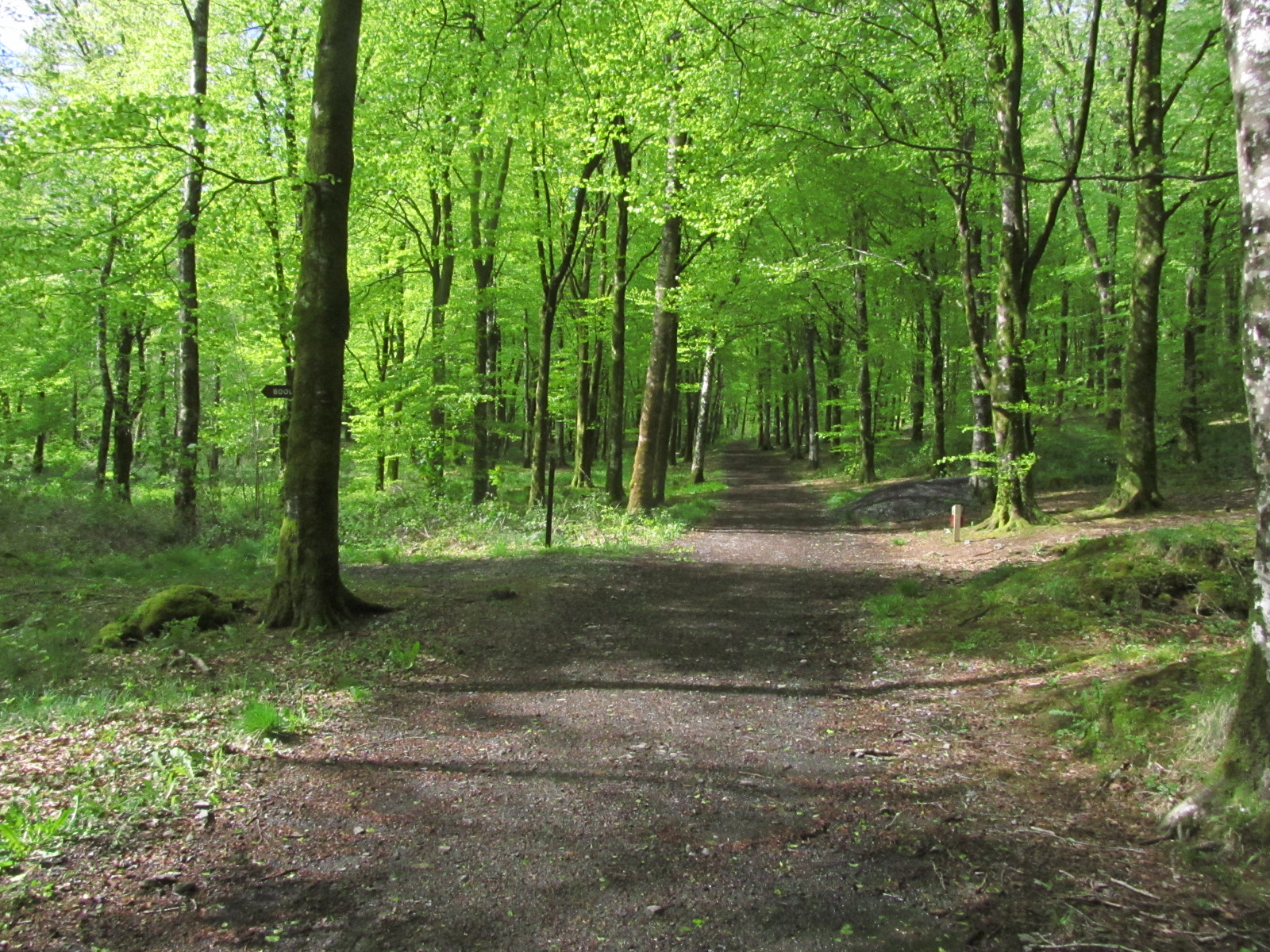 This is a typical Coillte (Irish equilvalant to the Forestry Commission) woodland walk, one of hundreds of similar walks in Ireland. A way-marker can be seen on the right. This trail is in County Westmeath.
This is a typical Coillte (Irish equilvalant to the Forestry Commission) woodland walk, one of hundreds of similar walks in Ireland. A way-marker can be seen on the right. This trail is in County Westmeath.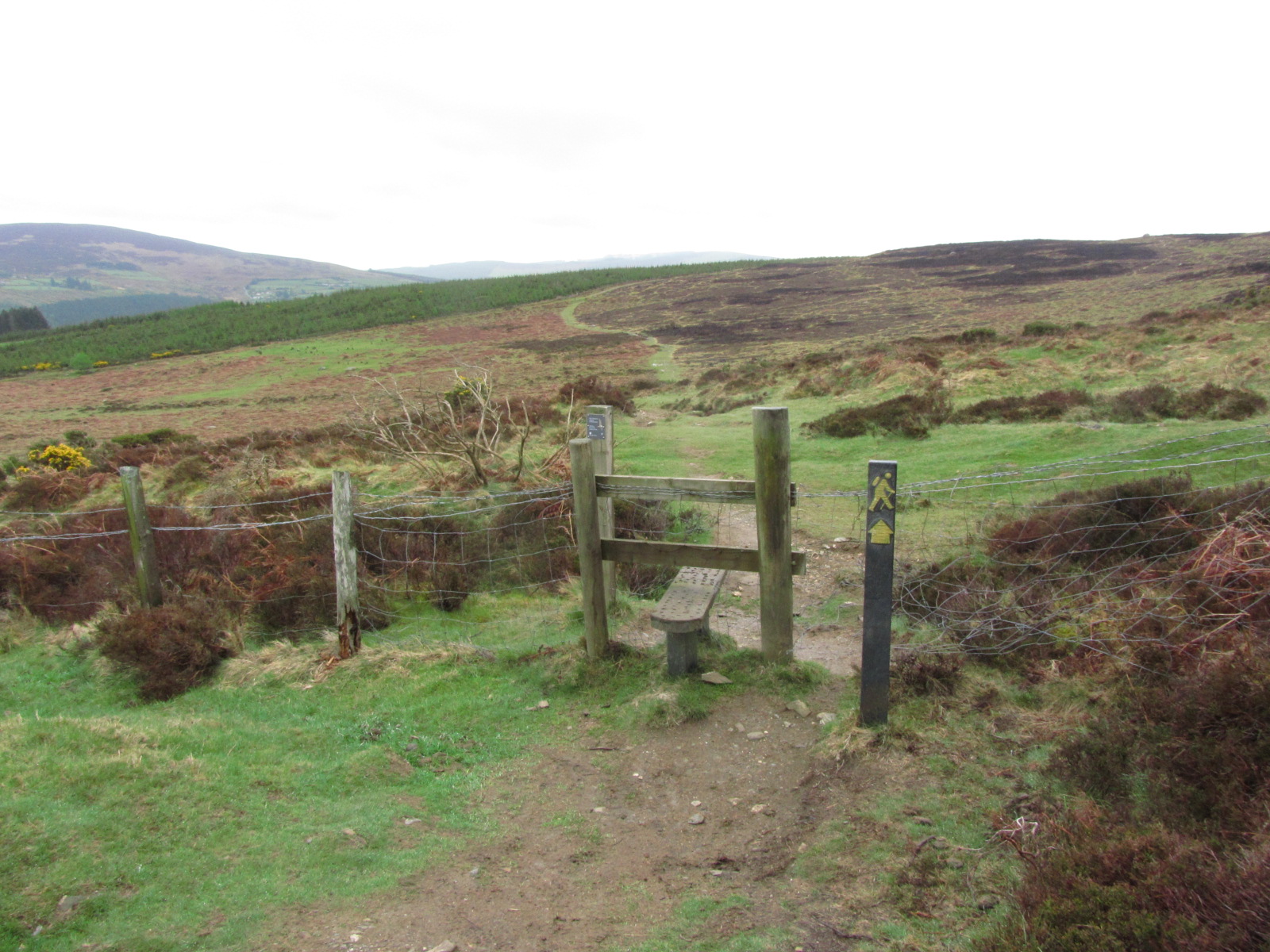 An example of a way-marker sign on the Wicklow Way. This trail is the most popular in Ireland being close to Dublin.
An example of a way-marker sign on the Wicklow Way. This trail is the most popular in Ireland being close to Dublin.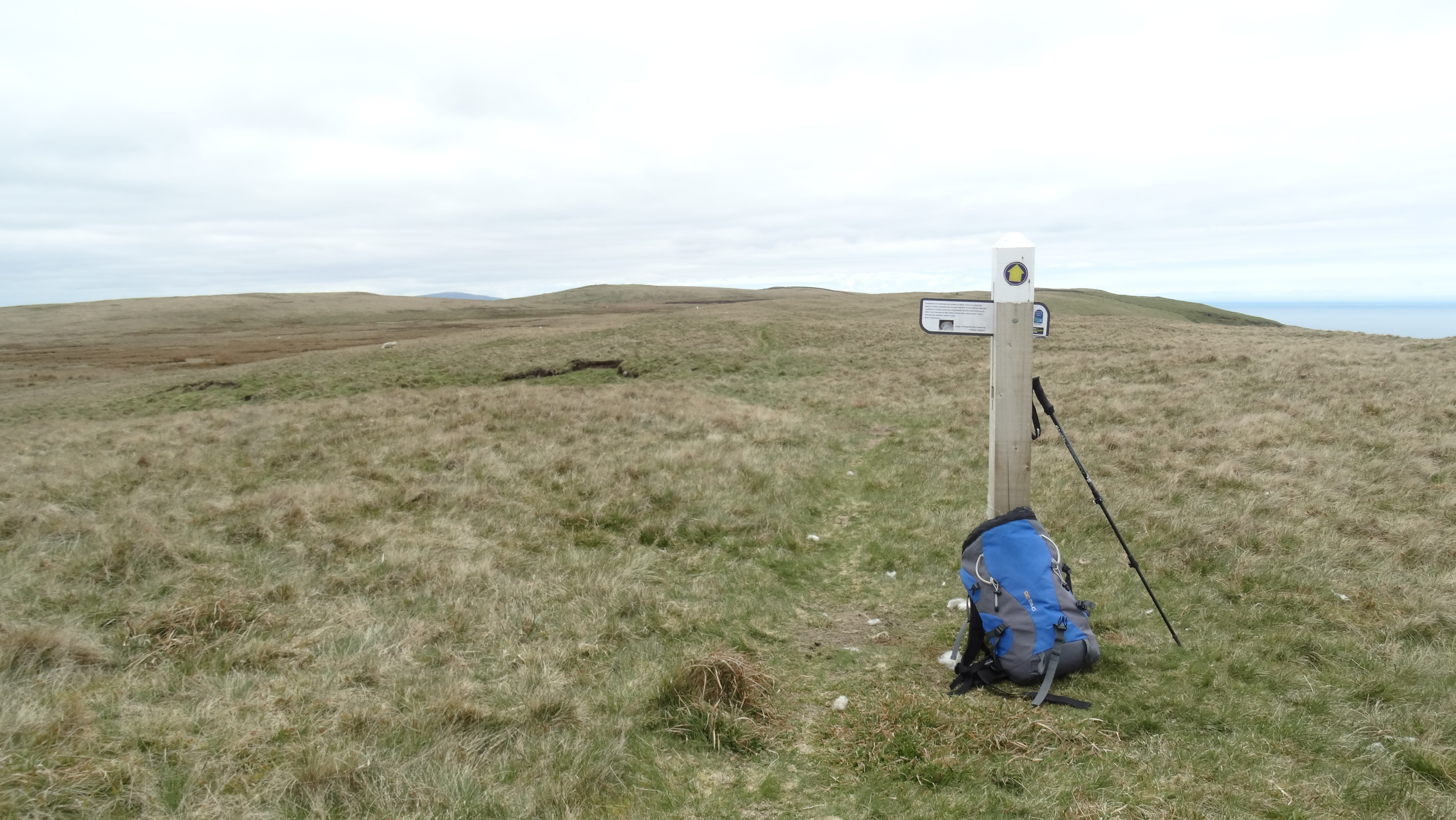 This way-marker has a pull out information panel, one of several on the Antrim Hills Way and explains the geology and history of the area.
This way-marker has a pull out information panel, one of several on the Antrim Hills Way and explains the geology and history of the area.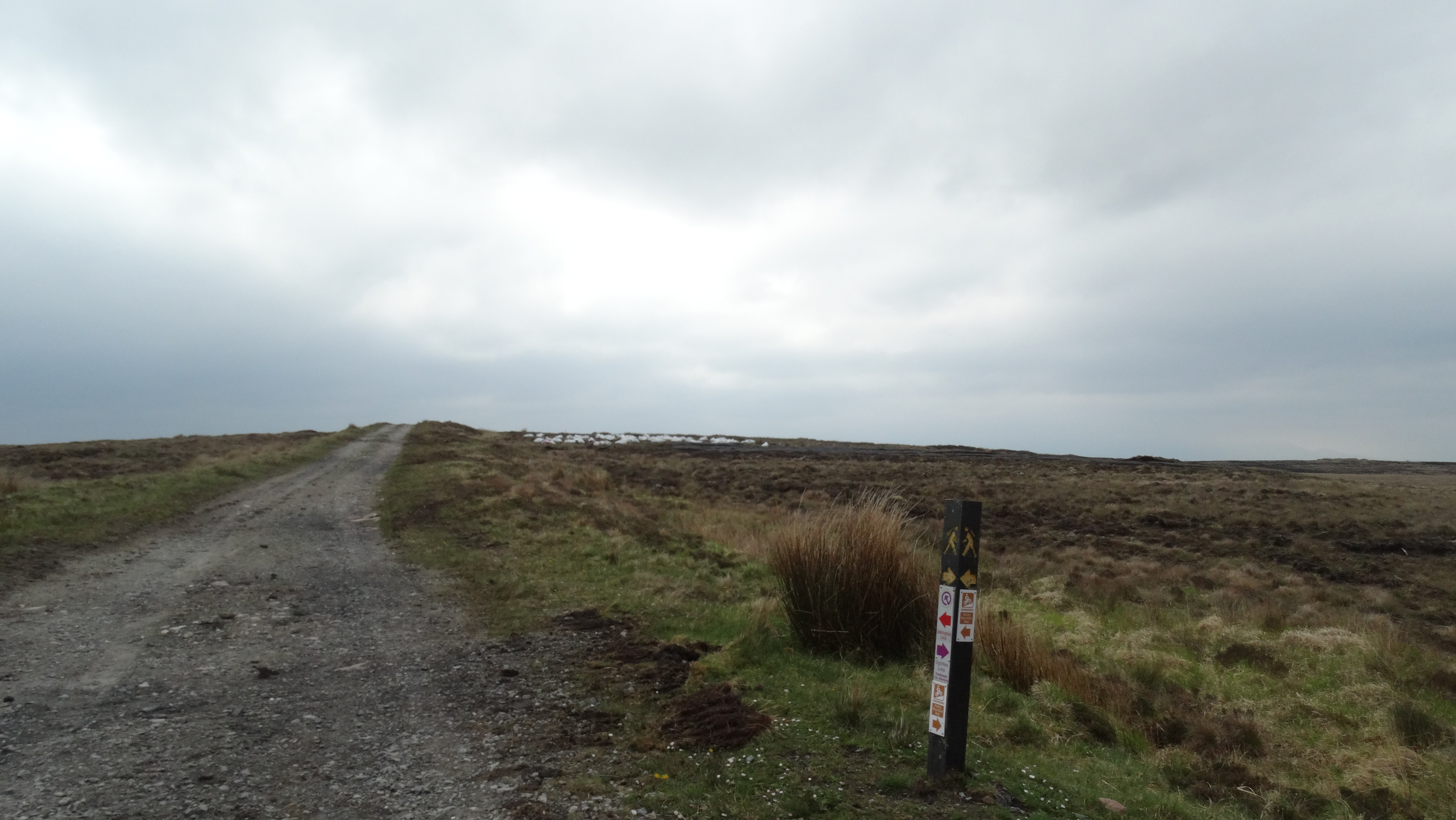 This is a typical way-marker in County Mayo. The post happens to be at the junction of several loop walks which are colour coded.
This is a typical way-marker in County Mayo. The post happens to be at the junction of several loop walks which are colour coded.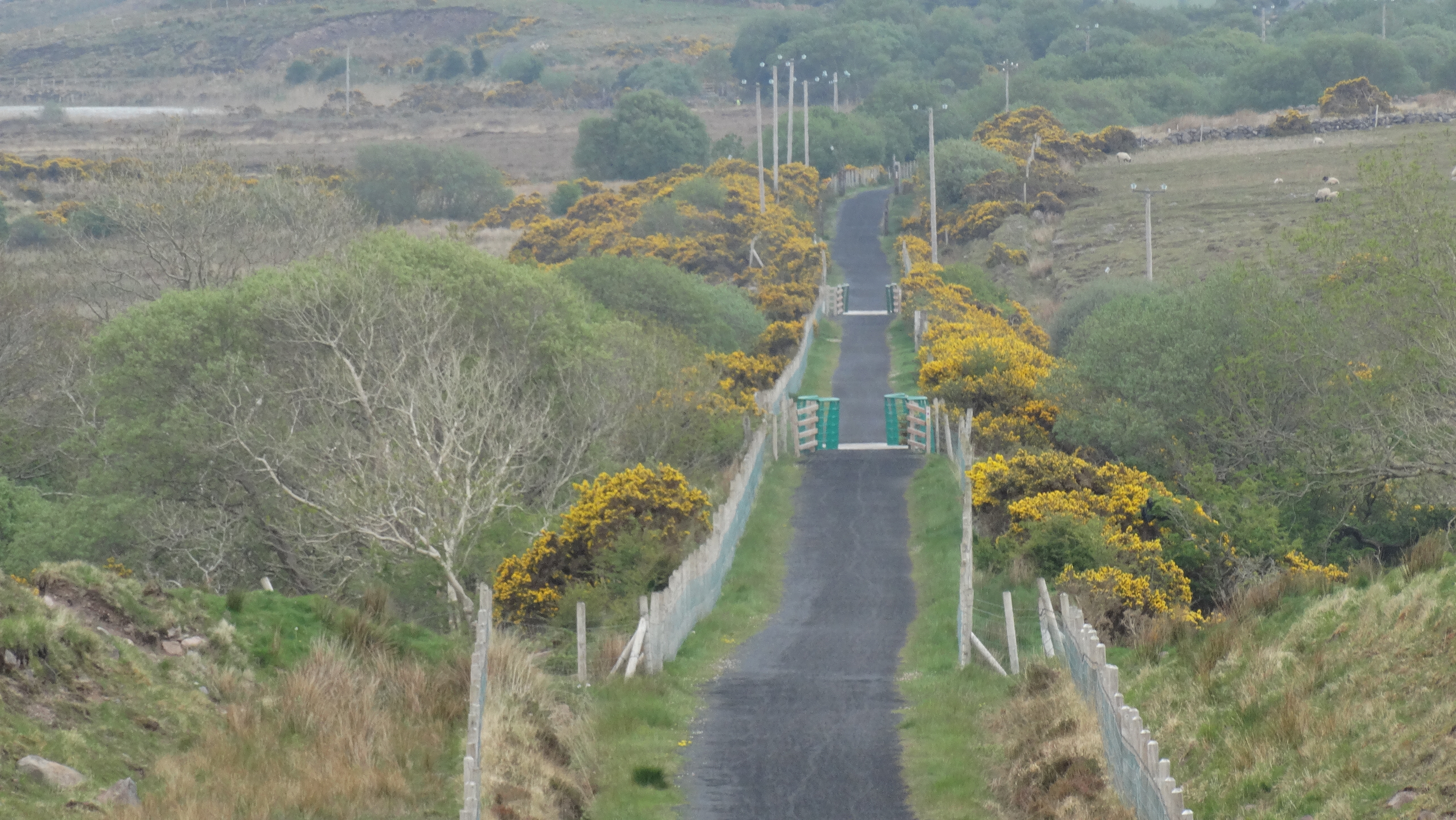 An excellent example of a trail which can be walked or cycled and is largely off-road except for following the odd quiet lane. This trail runs from Newport County Mayo to Achill Island and follows the track bed of an old railway and is currently being extended towards Westport making it over 40 kilometres long. There are information points along the way.
An excellent example of a trail which can be walked or cycled and is largely off-road except for following the odd quiet lane. This trail runs from Newport County Mayo to Achill Island and follows the track bed of an old railway and is currently being extended towards Westport making it over 40 kilometres long. There are information points along the way.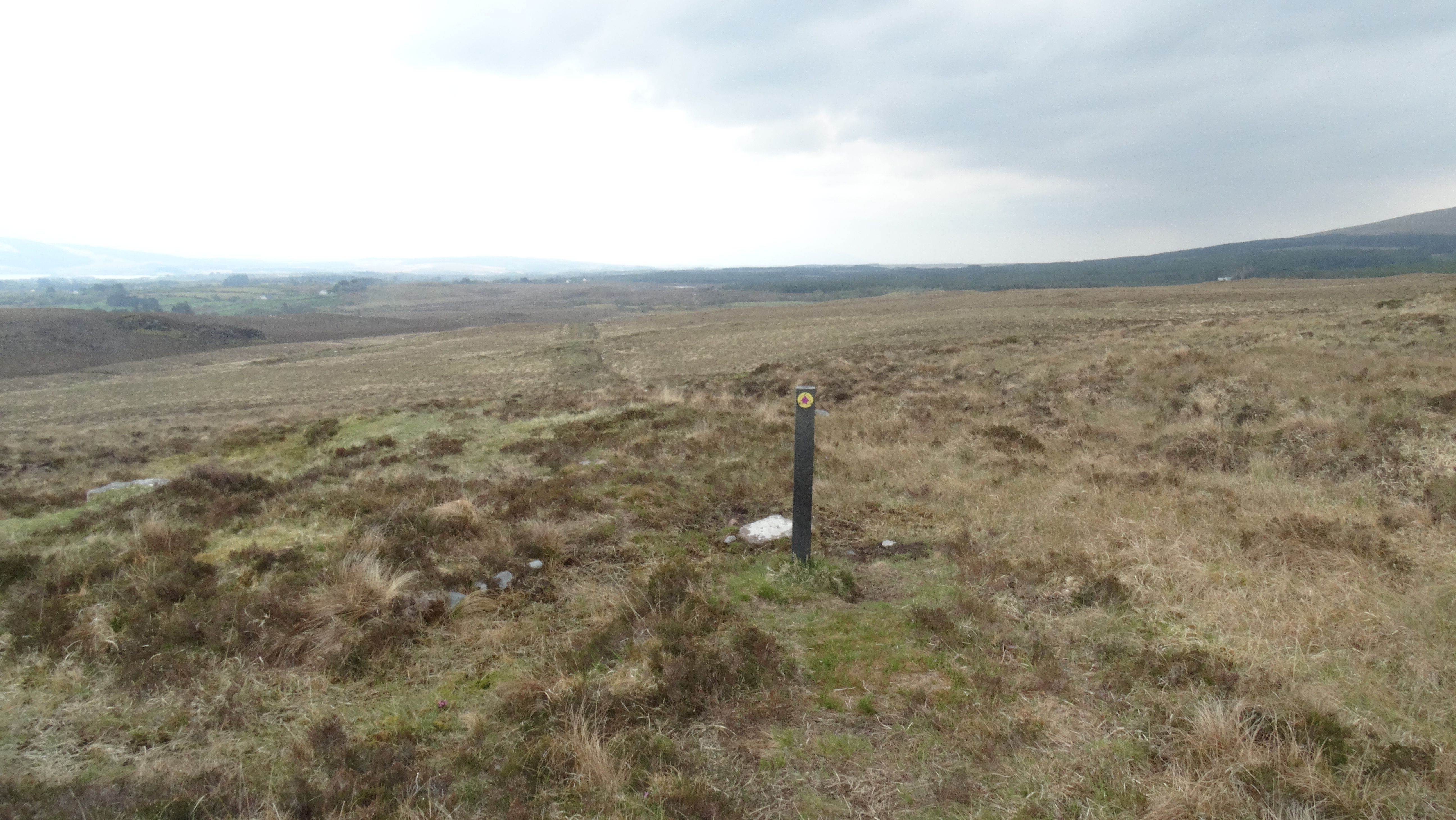 Just an example of a moorland loop walk. The way-markers are spaced fairly close together that you can always see the next one (unless you are out in a thick Irish mist). You may just be able to see the next post on the photograph. Paths are normally well defined but in places can be a bit waterlogged however there are boardwalks if the going gets tough.
Just an example of a moorland loop walk. The way-markers are spaced fairly close together that you can always see the next one (unless you are out in a thick Irish mist). You may just be able to see the next post on the photograph. Paths are normally well defined but in places can be a bit waterlogged however there are boardwalks if the going gets tough.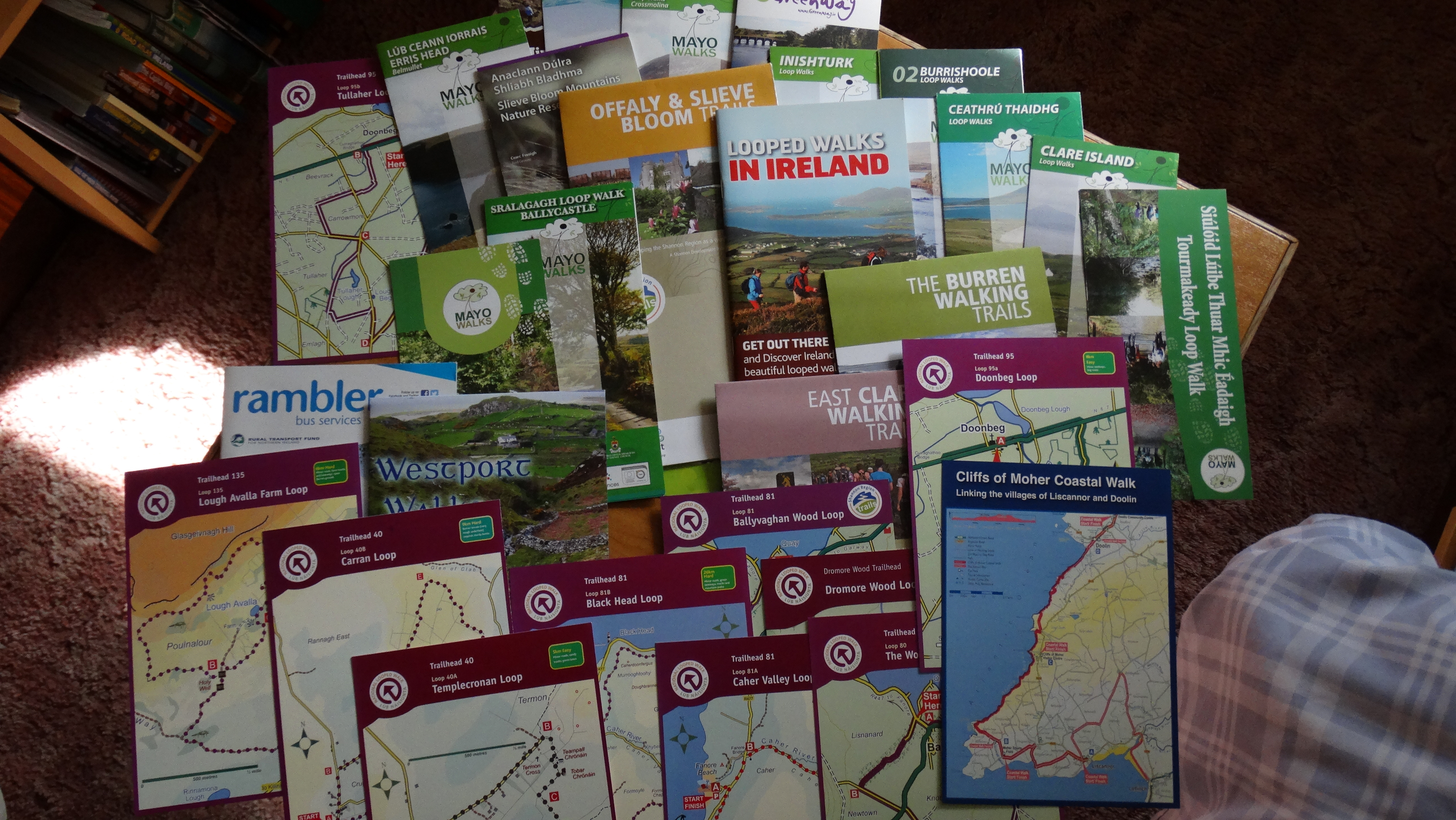 There is a vast variety of walking literature available from Tourist Information Centres in most Irish towns. Ireland is out to promote walking in a big way and this little lot was a selection of leaflets and booklets picked up during my last visit.
There is a vast variety of walking literature available from Tourist Information Centres in most Irish towns. Ireland is out to promote walking in a big way and this little lot was a selection of leaflets and booklets picked up during my last visit.
